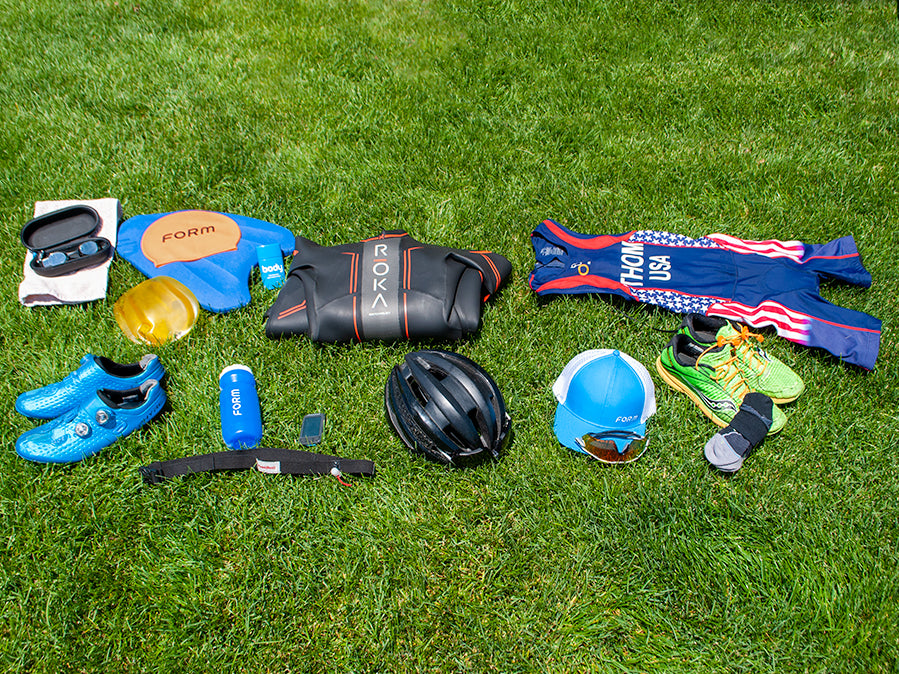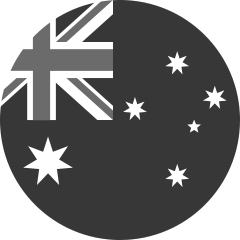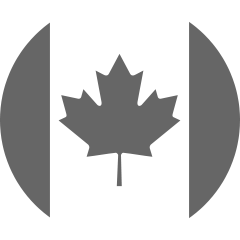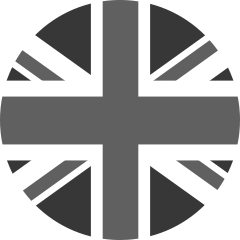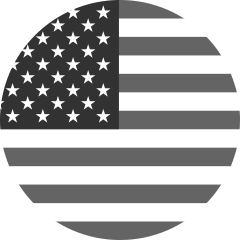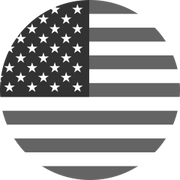Best Triathlon Gear for Beginners
Congratulations! You’ve committed to doing your first triathlon. To make the most of your training and get the best finishing time on race day, you’ll want some specialized triathlon gear and equipment for beginners.
Here’s our list of recommended triathlon gear and equipment for beginners that will help you during your training, on race day, and beyond:

Running triathlon gear for beginners
Running shoes
Did you know that typical running shoes only last 300-500 miles? At about that time, the shoe’s sole will start to lose its cushioning and shock-absorption properties.
Get your running shoes professionally fitted to ensure you have the proper support for your foot type. A professional can help you pick the right shoes based on your foot shape and running style. Be sure to tell them you’re wearing them for a triathlon, too.
For an easier transition from the bike segment of your triathlon, consider adding elastic laces, which you can quickly pull tight and lock into place. When each second counts, this piece of triathlon gear can make a difference.
Triathlon socks
It’s considered one of the great debates among triathletes: Socks or no socks? If you wear socks, you could lose precious seconds in transition as you take them on and off. On the other hand, if you’re prone to blisters, you may decide socks are necessary.
If you say “yes” to adding socks to your triathlon wardrobe, choose ones made from moisture-wicking material, and that includes a double layer to reduce friction.
By the way, if you’re concerned about sand sticking to your feet before throwing socks on, most races have small pools of water to dip your feet or water hoses to avoid this issue.
Triathlon suit (or triathlon kit)
Triathlon suits, also known as tri suits, are usually made of moisture-wicking material and are designed around wind and water resistance and temperature regulation. They typically include a chamois (small pad) in the buttock region for extra padding during cycling. If it’s your first time wearing one, it can take some getting used to, so practice wearing it (and swimming in it) before your race to make sure you’re comfortable and focused. You can wear these suits throughout your entire race, which minimizes time wasted changing your clothes. An added bonus? Because tri suits are form-fitted, they can also reduce the chance of your clothing getting snagged on your handlebars or other racers.
Sunglasses
Sunglasses may seem like a small thing for a race but are essential eye protection when cycling. Not only that, they’ll keep the sun, bugs, rain, and wind out of your eyes so you can focus on your race. Be sure to choose a good pair of performance sunglasses with UV ray filtration and photochromic lenses to adapt to changing lighting conditions more naturally. Also, make sure they fit well, so they don’t bounce around on your face as you run or bike.
Biking triathlon gear for beginners
Choosing the right bike
There are bikes for every budget and type of rider. If you’re thinking long-term, look for a mid-range model. If you’re more budget-conscious and already have a decent road bike, you can add a clip-on aerobar to make it more suited for triathlons.
It’s up to you what type of bike you pick up for your event too, whether you’re most comfortable on a flat bar bicycle with flat pedals, a road bike with clipless pedals, a time trial bike, or in the case of doing an off-road triathlon, a mountain bike. Before your event, make sure to check whether there are any race-specific rules regarding bikes.
We always recommend testing a bicycle before you buy it. Bikes aren’t something you want to purchase online, sight unseen. Many professional bike shops can help you get properly fitted during the bike buying process. Trust us; a properly fitted bike will be much more comfortable, encourage you to train harder, help you avoid injury, and ultimately help you race faster.
Helmet
Helmets are another essential piece of triathlon gear for beginners to advanced triathletes. You can buy top-of-the-line helmets with aerodynamically placed moldings and vents, but for the casual triathlete, it’s not a necessity.
Here are some must-follow tips for choosing the right helmet for your race:
- Ensure it has passed all safety tests (as required by local laws and your race organizer).
- Make sure you try on your helmet and test it well before race day to make sure it’s comfortable and breathable.
- When trying on helmets, try them on with your race sunglasses to ensure the fit is comfortable.
Bike shoes
We recommend specially designed shoes for the biking portion of your race. The right bike shoes will help you pedal faster and get on and off your bike easier too! They often include a single strap for quick fastening, a stiff sole for comfort and efficient energy transfer on the pedals, and a heel-loop to give you extra leverage when pulling them on.
When racking your bike in transition, you can also attach your bike shoes to your pedals, so you have the option to run out of the water barefoot, jump on your bike and start pedalling. Once you get some speed going, you can then slip your feet into your shoes.
Bike computer
If you’re looking to maximize your training, a bike computer is a must-have so that you can see data-based, measurable progress and reports. It’s a great way to improve your biking skills while you train because you see real-time data. Most computers will track your speed, distance, and GPS location at a bare minimum.
If you are already a hobbyist or casual cyclist, you may currently use an app on your phone for your biking stats, but you don’t want to be fiddling with your phone or smartwatch in a triathlon. And besides, most races don’t allow phones. We suggest getting a high-quality bike computer for triathlon training and on race day and mount it to your bike.
Race belt
It’s a simple yet effective ‘innovation’ when racing: the race belt!
A race belt holds your triathlon bib number and easily swivels from the front to the back, so your number is visible when cycling and running. Using a race belt means you don’t have to poke holes into your triathlon suit, potentially ruining the material and avoids you having to re-pin your number from the front to back and vice versa during transition. Trust us; when your hands are shaking from exhaustion or adrenaline, not having this could tack on several extra minutes to your time!
As a bonus, many race belts have handy gear storage for gels, nutrition, and hydration.
Water Bottle
Hydration is essential in any sporting event. Dehydration may cause many issues, including a reduction in blood volume, decreased sweat rate, reduced heat dissipation, increased core temperature, increased risk of muscle cramps, and increased rate of glycogen use. All of which can reduce your overall triathlon performance significantly!
Therefore, a water bottle is an essential piece of first time triathlon gear. You should have at least one bottle mounted to your bike. Make sure you choose one that’s easy and quick to drink from — standard squeeze bottles are our favorite.
About four hours before your race, the National Strength and Conditioning Association recommends drinking 5-7 mL of a hydrating fluid per kilogram of body weight (about 1 oz of fluid per 10 pounds of body weight). A well-hydrated body allows you to sustain more extended and intense workouts like a triathlon!
Swimming triathlon gear for beginners
Wetsuit
If you compete in colder climates or water, you may want to wear a wetsuit over a tri suit. Wetsuits are specially designed for colder water temperatures up to 76.1F/24.5C. Be sure that you are purchasing a triathlon-specific wetsuit as opposed to one designed for surfing or diving, as these are designed for speed in addition to buoyancy and heat.

Swimskin
If you are competing in warmer climates, then a swimskin might be a good investment. Also known as speed suits, swimskins are high-performance alternatives to wetsuits designed to reduce drag by compressing your body. They are worn over tri suits for the swim portion of the race and are not meant to be worn alone as a regular swimsuit.
Learn more about what to wear in our Beginners Guide to Triathlon Swimwear.
Kickboard
While you won’t use this on race day, it’s an essential triathlon training tool. They’re great for helping beginner swimmers practice their form. To get the most training benefit from kickboards:
- Don’t allow the board to change your body position in the water too much. Stretch your body to maintain a normal body position.
- Don’t lean your whole body on the board. Instead, gently hold it out in front of you.
- Don’t lift your body out of the water (a curved spine affects your form and speed)
Pull buoy
Another piece of equipment used in training is a pull buoy, which can help improve your power and positioning as a swimmer. When held between the thighs, the pull buoy floats your hips and legs up above the surface of the water so that you only use your arms to propel forward. This improves arm and upper body strength as well as body position in the water and is a great tool to include in your triathlon training arsenal.
Paddles
When doing your triathlon training in the pool or open water, a pair of paddles on your hands will add resistance to your stroke so you can increase your power in the water. When you’re doing freestyle swim sets, these are great to help you mix things up a bit.
Paddles magnify every part of your stroke and will help you go faster in the water. You can determine if your catch, pull, or entry limit you and learn to correct it.
Swim cap
Anything on your body can add resistance to your run, bike, and swim. Whether you have long hair or short hair, cover it with a swim cap to cut down on that resistance. It’s also a great way to keep your head warm during cold water swims. You may also find that a swim cap that fits well will hold your goggles in place better!
Transition Towels
If you’ve ever tried to put on shoes with wet feet after a swim, you know how difficult it can be under normal conditions. Add to that your exhaustion and adrenaline after just completing your swim portion of the race, and you’re going to waste a lot of time putting on your shoes.
Purchase a small, inexpensive hand towel and place it next to your gear so you can quickly dry your feet off during the transition.
Goggles
Poorly fitted goggles will make the swimming portion of your race uncomfortable and hinder your performance. Test your goggles before race day to make sure they have a tight vacuum seal. FORM Smart Swim Goggles include seven nose bridge sizes so you can get the most comfortable fit. With their see-through display, the FORM goggles track your metrics in real-time to ensure you’re performing at your best throughout your whole swim and adjust on the fly, if needed, to improve your performance.
Of course, our FORM goggles are on our list of the best triathlon gear for beginners because you get real-time stats to ensure you’re performing at or better than your practice swims. With live counts for your stroke and stroke rate, you can be sure you’re at the top of your game.

Data from the FORM goggles is automatically uploaded to your FORM Swim App to review the data with your trainer after the race and see how you can use the results to help you improve your performance next time.
Whether you’re looking for triathlon gear for beginners or are an experienced athlete looking for the latest tech to help you win your next race, a pair of FORM Smart Swim Goggles is the perfect addition to your gear bag!
